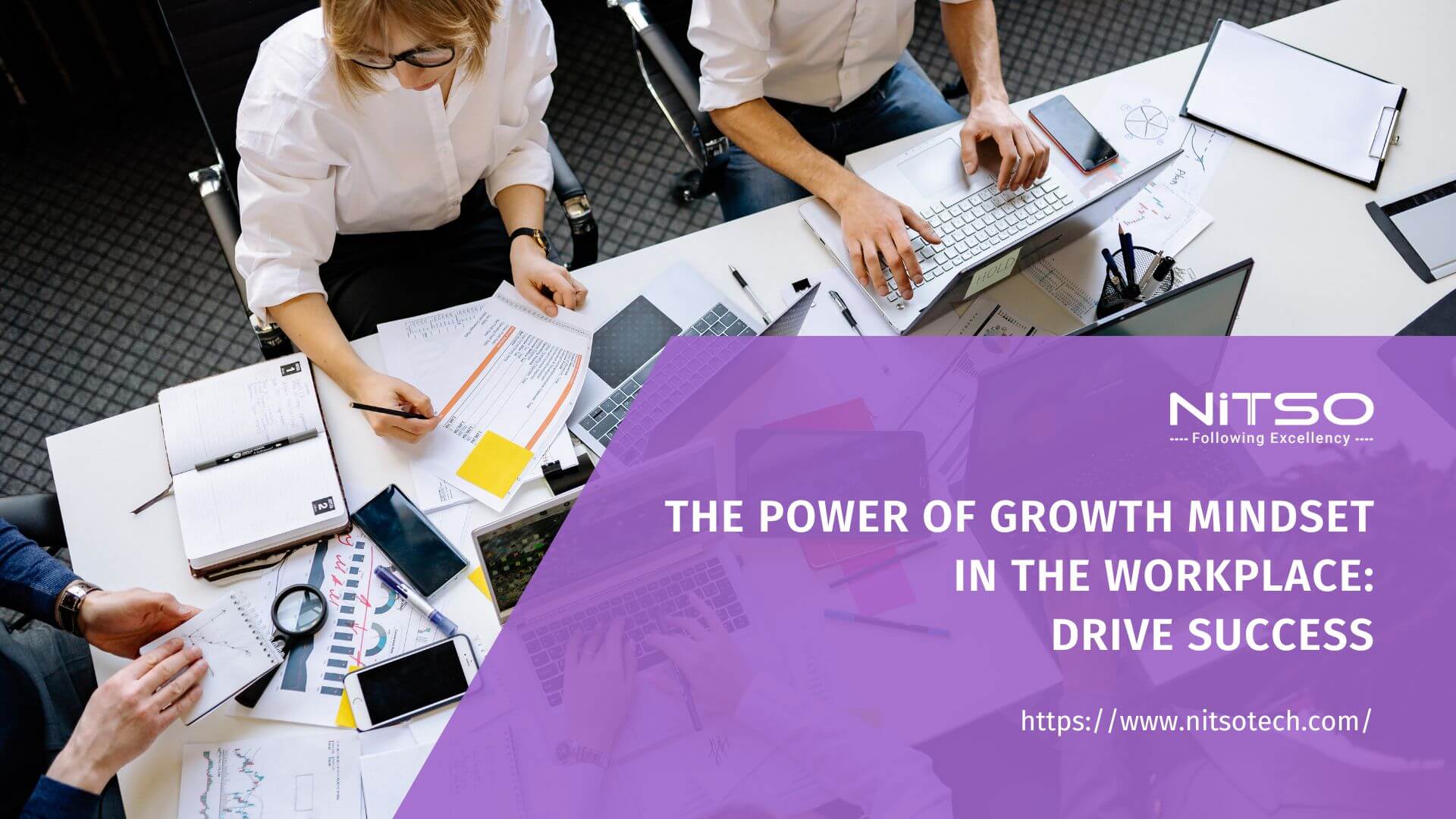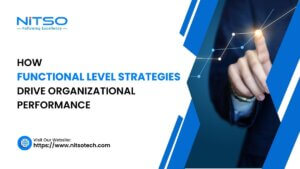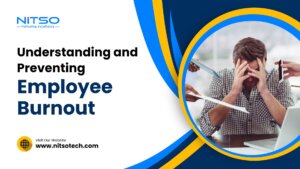In today’s business landscape, characterized by rapid change and disruption, how do companies empower their employees to continuously learn, adapt and drive innovation? The answer lies in cultivating a growth mindset across the organization.
Research shows that 85% of employees with a growth mindset feel they can take on greater responsibilities to advance their careers, compared to 26% with a fixed mindset.
But what exactly is a growth mindset and why does it matter? A growth mindset is the belief that abilities are not set in stone but can be developed through effort, learning and mentorship. This opens people up to possibility and drives the resilience needed to persist in the face of challenges. With the right strategies, companies can shift mindsets and unlock their workforce’s full potential.
This article will explore the immense benefits of growth mindsets for employees and organizations along with practical ways to implement this enabling culture.
Content On This Page
Understanding growth mindset in the workplace
A growth mindset in the workplace is the belief that your skills and abilities can be developed with effort, strategies, and mentorship. It is the understanding that you can continuously expand your capabilities through hard work. With a growth mindset, you view challenges as opportunities to improve rather than seeing them as threats.
A fixed mindset, on the other hand, assumes that your qualities and talents are set in stone. This mindset makes you avoid challenges that could lead to failure. Having a fixed mindset limits your potential for growth.
Developing a growth mindset opens you up to possibilities. It allows you to take on new challenges without the fear of failure holding you back. This mindset is essential for innovation, progress, and success in the modern workplace.
Benefits of having a growth mindset in the workplace
Adopting a growth mindset provides many advantages for both employees and organizations. Here are some of the key benefits:
- Fosters a culture of learning and development: With a growth mindset, employees are motivated to gain new skills. This leads to greater engagement in training and courses. It promotes continuous learning in the workplace.
- Encourages taking on challenges: Employees with a growth mindset are more likely to take on stretch assignments and projects outside their comfort zone. This leads to the acquisition of new capabilities.
- Builds resilience in the face of setbacks: Setbacks are seen as opportunities to improve rather than failures. This resilience powers persistence which ultimately leads to success.
- Drives innovation: A growth mindset enables experimentation with new ideas without the fear of failure. This promotes innovative thinking.
- Enhances collaboration: Employees are more open to feedback and diverse perspectives when they have a growth mindset. This facilitates greater collaboration.
- Increases employee engagement: The focus on personal development keeps employees engaged and motivated. This leads to greater productivity and performance.
- Promotes leadership development: Leaders with a growth mindset coach their teams and develop future leaders rather than hoarding knowledge and resources.
By cultivating a growth mindset across your organization, you empower your people and drive progress. It is a key enabler for organizational success in today’s disruptive business environment.
Strategies to encourage a growth mindset in the workplace
Fostering a growth mindset across your organization requires intentional strategies and interventions. Here are some effective ways to encourage a growth mindset among your people:
- Lead by example: Managers and leaders should model a growth mindset by sharing their own learning journeys. They should openly discuss the challenges they faced and what they learned from those experiences.
- Provide learning opportunities: Invest in developing your people by providing training, job rotations, mentorship programs and stretch assignments. This facilitates continuous learning.
- Recognize efforts: Recognize efforts and celebrate progress rather than just achievements. This reinforces that abilities can be developed through effort.
- Promote an innovative culture: Encourage experimentation and appreciate innovative thinking, even when ideas fail. This will help people think outside the box.
- Give constructive feedback: Provide constructive feedback focused on learning and development rather than just criticism. Help people identify areas for growth.
- Allow mistakes: Understand that mistakes are part of the learning process. Analyze setbacks objectively and focus on how to improve.
- Set learning goals: Encourage employees to set goals focused on developing new skills rather than just task goals. Review their progress periodically.
- Offer mentorship: Facilitate mentoring relationships where experienced employees can coach others to develop new capabilities.
The importance of having a growth mindset in the workplace
Having a growth mindset is critical in today’s dynamic workplace. It enables employees and organizations to reach their full potential. A growth mindset empowers people to see challenges as opportunities to gain new skills.
It promotes resilience and persistence in the face of setbacks. Employees are motivated to push beyond their comfort zones. They actively seek feedback and ways to improve. With a growth mindset, managers can develop their teams more effectively. They are open to learning from failures and coaching others.
Overall, a growth mindset facilitates continuous learning, adaptation, innovation and progress. It equips employees and companies to succeed in an era of unprecedented change and disruption. Organizations that cultivate a growth mindset across all levels are better positioned to thrive in the modern business landscape.
Examples of growth mindset in action in the workplace
A growth mindset is demonstrated through behaviours like seeking challenges, persisting despite setbacks, and proactively learning. Here are some examples of a growth mindset in action in the workplace:
- A marketing manager volunteers to lead a project using a new social media platform he is unfamiliar with. He is excited to learn something new even if he makes mistakes along the way.
- An employee receives critical feedback from her manager about her presentation skills. Rather than getting discouraged, she asks for specific ways she can improve and signs up for a public speaking course.
- A team experiences setbacks while launching a new product. They analyze what went wrong and use it as a learning opportunity. They persist and are able to successfully launch the product eventually.
- A leader openly shares how he struggled when he first became a manager early in his career. He discusses what he learned through those challenges.
- A manager has a growth-focused mentality when conducting performance reviews. She provides constructive feedback on areas of improvement and helps create development plans.
How to encourage a growth mindset in the workplace
Ways to foster growth mindsets include constructive feedback, learning resources, celebrating progress, and stretch assignments. Here is a detailed overview of how to encourage a growth mindset in the workplace:
- Lead by example: Managers and team leaders should model a growth mindset by being open about their own learning processes. They can discuss their early career challenges, what they learned from failures, and how mentorship helped their development. This normalizes the continuous learning journey.
- Provide adequate learning resources: Invest in books, online courses, workshops, and other learning materials. Enable easy access so employees can develop new skills proactively. Offer stipends or tuition reimbursement.
- Develop mentorship and coaching programs: Pair junior employees with more experienced mentors. Encourage knowledge sharing through regular check-ins. Train managers on coaching mindsets and skills.
- Recognize efforts and progress: Praise employees for their grit, strategies, and effort. Celebrate small wins and milestones in addition to major achievements. Share stories of persistence paying off.
- Allow experimentation and be tolerant of failure: Provide sandbox environments for testing ideas without repercussions. Conduct retrospectives to extract learnings from failures rather than punish them.
- Give constructive feedback: Provide regular, timely feedback focused on development. Outline specific strategies for growth rather than just criticism. Help people identify blindspots.
- Encourage skill-building stretch assignments: Challenge high performers with projects that require developing new capabilities. Offer support and mentorship.
- Set learning-oriented goals: Collaborate to set goals about gaining skills and knowledge. Review growth periodically. Update goals as capabilities improve.
- Promote knowledge sharing: Facilitate forums for people to exchange skills and ideas, like lunch-and-learns, talks, and workshops. Enable job rotations.
- Keep iterating your strategies: Survey employees regularly to identify gaps. Analyze trends and refine approaches continuously.
Overcoming challenges to maintaining a growth mindset
Adopting a growth mindset across an organization can encounter some obstacles. Here are strategies to tackle common challenges:
- Overcoming resistance to change: Some employees may cling to fixed mindsets and resist adopting a growth mentality. Provide coaching on the benefits of a growth mindset. Start with small steps like being open to feedback. Celebrate wins to motivate change.
- Lack of psychological safety: There may be fears of judgment which inhibit risk-taking and vulnerability needed for growth. Leaders should ensure that failures will not be punished and everyone is learning. Promote empathy and trust.
- Complacency and stagnation: Long-tenured employees may become too comfortable with the status quo. Offer new challenges and learning opportunities to reignite their growth mentality. Rotate job roles.
- Limited learning resources: Growth requires investment in development resources. Allocate budget for training programs, workshops, and courses. Explore cost-effective options like online content and peer coaching.
- Focus on short-term goals: There may be pressure to deliver immediate results, compromising learning. Leaders must reinforce that long-term growth requires short-term investment. Balance growth goals with business needs.
- Time constraints: Busy schedules may leave little time for skill development. Find ways to integrate learning into daily work like research, reading forums, and on-the-job training.
- Lack of accountability: Without tracking mechanisms, growth goals may be abandoned. Set milestones, conduct regular check-ins, and celebrate progress. Include growth metrics in performance reviews.
Implementing a growth mindset culture in the workplace
Creating a culture that embraces growth mindsets requires persistent effort across all levels of an organization. Leaders must role model vulnerability, to a coach rather than criticize and celebrate progress.
Providing access to learning resources like training programs, mentors, and stretch assignments enables development. Transparent communication, psychological safety, and constructive feedback are critical. Failure should be analyzed for insights rather than punished. Regular check-ins on growth goals and milestones hold people accountable.
However, the most important element is patience. Shifting mindsets takes time. Progress will be gradual but compounding. With consistent modelling, messaging, and processes that reinforce learning over time, organizations can transform their cultures into thriving hubs of continuous growth.
Article you might be interested in Leveraging Effective Functional Level Strategies for Growth
The Finish Line
To thrive in the modern business environment, organizations must empower their people to continuously push the boundaries of their current capabilities. A growth mindset culture achievement this by cultivating the thirst for lifelong learning and motivating people to confront challenges.
However, realizing this cultural transformation requires concerted efforts across all levels over a sustained period of time. Leaders must role model vulnerability, provide developmental resources, recognize progress, and allow failure. With their tremendous power to enable adaptation and innovation, growth mindsets are becoming a vital competitive advantage.
The workplace of the future will belong to those organizations that can successfully embed this enabling culture. By starting today with small consistent steps to shift mindsets, companies can future-proof their workforce and drive progress in the age of disruption.








0 Comments